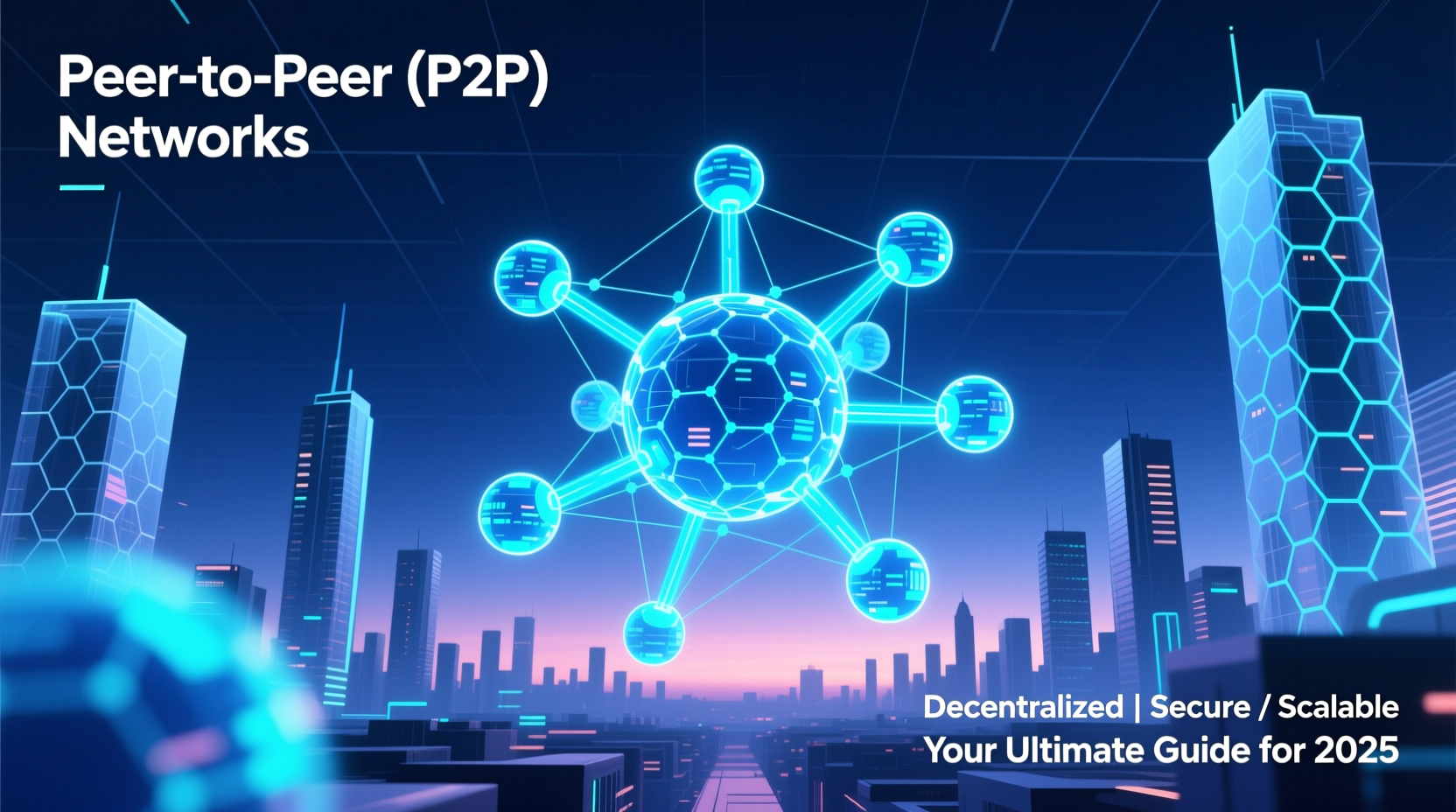Understanding Peer-to-Peer Networks: A Comprehensive Guide
In the dynamic realm of technology, peer-to-peer (P2P) networks have surfaced as pivotal components, altering the landscape of data sharing and consumption on the internet. While numerous individuals engage with P2P networks regularly without a deep understanding of their operational intricacies, mastering the fundamental aspects of this technology is crucial for anyone aiming to grasp the nuances of contemporary digital communication. This expanded guide explores the complexities of P2P networks, detailing their definition, workings, advantages, challenges, and practical applications. Whether you're a technology enthusiast, a business executive, or simply intrigued by the inner mechanics of the internet, this article aims to furnish you with a thorough understanding of P2P networks.
Defining Peer-to-Peer Networks
A Peer-to-Peer (P2P) network marks a significant progression in the field of digital communication, introducing a decentralized system for exchanging data and sharing resources. Unlike traditional client-server models, which rely heavily on centralized servers to manage all communications, P2P networks function on the principle of peer collaboration. This mutualistic approach enables each peer to simultaneously perform the roles of client and server, allowing for direct resource sharing and access between peers. The process, streamlined by this direct interaction, significantly boosts the efficiency and scalability of the network.
The roots of P2P networking extend back to early computer science prototypes, but it gained widespread attention with the rise of file-sharing applications in the late 1990s and early 2000s. Pioneering platforms such as Napster, BitTorrent, and Gnutella demonstrated the transformative capability of P2P technology, showcasing a novel modality for digital content distribution and access. These applications permitted users to exchange large files like music, movies, and software directly amongst themselves, effectively bypassing the constraints presented by centralized hosting solutions.
Core Features of P2P Networks
The essential attributes of P2P networks underline their expansive impact on modern digital communication and their potential to foster innovation across various sectors:
| Feature | Description |
|---|---|
| Decentralization | Eliminates the necessity for a central server, offering resilience against failures or attacks. |
| Peer Participation | Relies on active peer contributions, enhancing network strength and responsiveness. |
| Direct Communication | Facilitates direct interaction between peers, boosting data transfer speed and efficiency. |
| Resource Sharing | Enables sharing of various resources, supporting applications ranging from collaborative workspaces to distributed computing. |
Exploring Applications of P2P Networks
P2P networks have been embraced in a multitude of sectors, spanning entertainment, finance, and healthcare, thanks to their ability to promote direct interactions without intermediaries:
File Sharing and Distribution: Platforms like BitTorrent redefine file sharing by enabling simultaneous downloading and uploading, distributing the load efficiently across various peers, which boosts download speeds.
Decentralized Finance (DeFi): Within blockchain and cryptocurrency ecosystems, P2P networks are vital for supporting decentralized finance (DeFi), allowing direct user transactions that bypass traditional banking frameworks, enhancing transparency through smart contracts.
Streaming and Content Delivery: P2P networks assist streaming services in optimizing content delivery by leveraging peer contributions to enhance scalability and minimize latency.
Collaborative Computing: Projects like SETI@home exemplify the potential of P2P networks to support distributed computing initiatives, pooling computational resources to tackle complex problems collectively.
Challenges and Considerations in P2P Networks
Although P2P networks present numerous advantages, they also pose challenges which necessitate careful management to ensure their effective deployment:
Security and Privacy: Direct data transmission between peers requires robust encryption and secure authentication to protect data against malicious actors, while privacy protocols need enhancement to safeguard personal data.
Scalability: As P2P networks grow, maintaining scalability to avoid performance bottlenecks demands sophisticated algorithms and network management strategies.
Legal and Ethical Issues: Navigating legal and ethical dilemmas posed by P2P networks, especially concerning copyright issues, calls for comprehensive compliance strategies and governance frameworks tailored to uphold decentralization principles.
Envisioning the Future of P2P Networks
With ongoing technological advancements, the role of P2P networks in the digital sphere is primed to increase, particularly with the emergence of blockchain technology, decentralized applications (dApps), and the Internet of Things (IoT):
Integration with Blockchain: The convergence of blockchain and P2P technologies offers promising opportunities for enhancing security, transparency, and efficiency, notably within supply chain management and identity verification sectors.
Enhanced Privacy and Security: Advanced cryptographic techniques like zero-knowledge proofs and homomorphic encryption are expected to fortify security within P2P networks, ensuring data integrity and privacy.
P2P in IoT: The fusion of P2P networks and IoT devices is anticipated to drive the creation of intelligent ecosystems marked by reduced reliance on cloud infrastructures, ensuring enhanced responsiveness and minimal latency.
Conclusion
Peer-to-peer (P2P) networks have revolutionized the methods of online data sharing and consumption by substituting centralized models with decentralized, direct device communication. Initially popularized by services like Napster and BitTorrent, P2P networks offer significant advantages, including efficient resource sharing and inherent scalability. Key attributes such as decentralization, peer participation, and direct communication make them suitable for varied applications like file sharing, decentralized finance (DeFi), and collaborative computing. Addressing inherent security, scalability, and legal challenges through advanced algorithms and governance is crucial for their sustained adoption. Looking forward, the integration of P2P networks with blockchain and IoT is poised to facilitate secure and interconnected environments, driving the next wave of digital innovation.











 浙公网安备
33010002000092号
浙公网安备
33010002000092号 浙B2-20120091-4
浙B2-20120091-4